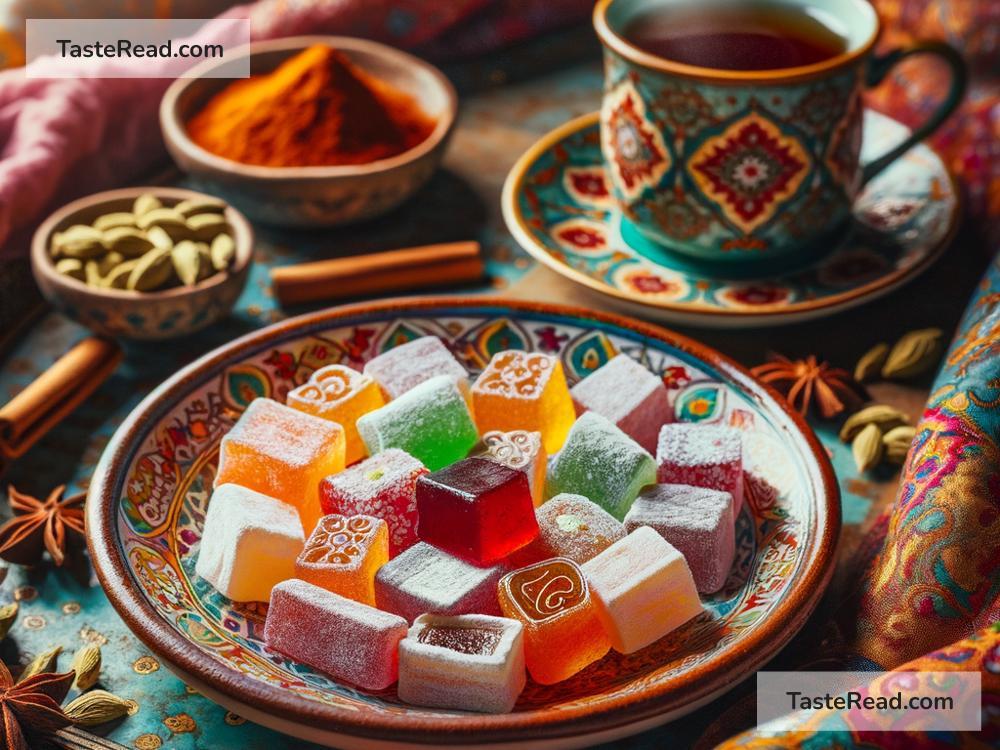The Influence of the Turkish Delight: A Sweet Journey Through History
Turkish Delight, or “lokum,” is one of the most famous sweets in the world, and its influence goes far beyond being a tasty treat. This soft, chewy candy has captured the hearts of people from many different cultures and even made its way into literature, movies, and traditions. In this blog article, we’ll explore the history, cultural importance, and global impact of Turkish Delight – all explained simply.
What Is Turkish Delight?
Turkish Delight is a sweet made primarily from sugar, starch, and water, sometimes flavored with rosewater, lemon, or orange. Often, nuts like pistachios, hazelnuts, or walnuts are added for extra crunch. The candy is cut into small bite-sized cubes, dusted with powdered sugar or coconut flakes to prevent stickiness.
Turkish Delight is not just a treat; it’s an experience. It has a soft, gummy texture that melts in your mouth, leaving behind magical flavors. For many people, tasting Turkish Delight feels like a gift for the senses.
The Sweet Origin of Turkish Delight
Turkish Delight has a long history that dates back to the Ottoman Empire in the late 18th century. While its exact origins are debated, many believe it was invented by a confectioner named Bekir Effendi in Istanbul. Bekir introduced the sweet to local and royal families, and it quickly became a favorite. The name “lokum” comes from the Arabic word “rahat al-hulqum,” meaning “comfort for the throat.”
During the Ottoman period, Turkish Delight wasn’t just a dessert; it was a way to show hospitality. Guests were welcomed with lokum and tea, a tradition that is still alive in Turkey today. Over time, Turkish Delight became a symbol of Turkish culture and craftsmanship.
Turkish Delight in Literature and Pop Culture
One of the most unexpected places where Turkish Delight has left its mark is in literature. It gained international fame through C.S. Lewis’s novel, The Lion, the Witch, and the Wardrobe. In the story, Edmund Pevensie becomes enchanted by the White Witch, who offers him enchanted Turkish Delight to win his loyalty. For many readers, this was their first introduction to the mysterious sweet.
The story’s use of Turkish Delight plays on its magical, irresistible qualities, making it a symbol of temptation and desire. Even today, fans of the book associate lokum with fairy-tale worlds and childhood imagination.
Turkish Delight has also appeared in movies, television shows, and even travel documentaries that explore Turkish culture. It is often seen as a symbol of exotic luxury, transporting viewers to the vibrant markets of Istanbul filled with colorful spices and handcrafted sweets.
The Global Influence of Turkish Delight
Turkish Delight is not limited to Turkey. Over centuries, its delicious reputation has spread across the globe. Today, you can find versions of this sweet in many countries, each with its own local twist.
- Greece: Locally known as “loukoumi,” Greek-style Turkish Delight is very similar to the original but often uses unique local flavors like mastic or bergamot.
- Cyprus: Cypriot-style Turkish Delight is so popular that its version is often packaged and sold internationally as “Cyprus Delight.”
- Middle East: In countries like Lebanon and Syria, similar sweets are often made with dates, honey, and nuts as variations of lokum.
- United Kingdom: After The Lion, the Witch, and the Wardrobe was published, Turkish Delight became quite popular in British candy shops, where it is still sold today.
- United States: Although not as common in the U.S., Turkish Delight is sometimes offered at specialty stores or during cultural festivals.
Turkish Delight’s ability to adapt to different cultures while keeping its unique characteristics has helped preserve its popularity for centuries.
Turkish Delight Today: A Symbol of Hospitality and Heritage
In Turkey, Turkish Delight is more than just food; it’s a symbol of hospitality, celebration, and tradition. If you visit Turkey today, you’ll likely find lokum offered everywhere – from homes to cafes to bustling bazaars. It’s a must-try for tourists eager to taste authentic Turkish culture.
During holidays like Bayram (the celebration after Ramadan) or weddings, Turkish Delight is often given as a sweet gift. The candy boxes are sometimes decorated with intricate patterns, showing that lokum is not just food but a piece of art. Families take pride in choosing the best flavors to share with loved ones.
High-quality Turkish Delight is still handmade in many parts of Turkey, keeping the tradition alive. Skilled candy makers boil and mix the ingredients, pour the sticky mixture into trays, and cut it into perfect cubes – a labor of love.
What Makes Turkish Delight Special?
Beyond its historical roots and global fame, Turkish Delight holds a special place in people’s hearts because it’s not just a candy—it’s a connection to the past. When you eat a piece of lokum, you’re tasting centuries of tradition that have been passed through generations. Its soft, delicate flavor reminds people to slow down and savor the moment.
Final Thoughts
The influence of Turkish Delight goes far beyond its delicious taste. It’s a cultural treasure, a literary icon, and a worldwide symbol of sweetness and hospitality. Whether you first encountered it in a storybook or a market stall, Turkish Delight continues to charm people everywhere.
Next time you bite into a piece of lokum, remember: you’re enjoying something with a rich history and an even richer flavor. It’s not just candy—it’s a bridge between cultures, a reminder of tradition, and, of course, a delightful treat for your taste buds.
So grab a box of Turkish Delight and share it with someone—it’s a sweet way to create memories that last forever!


